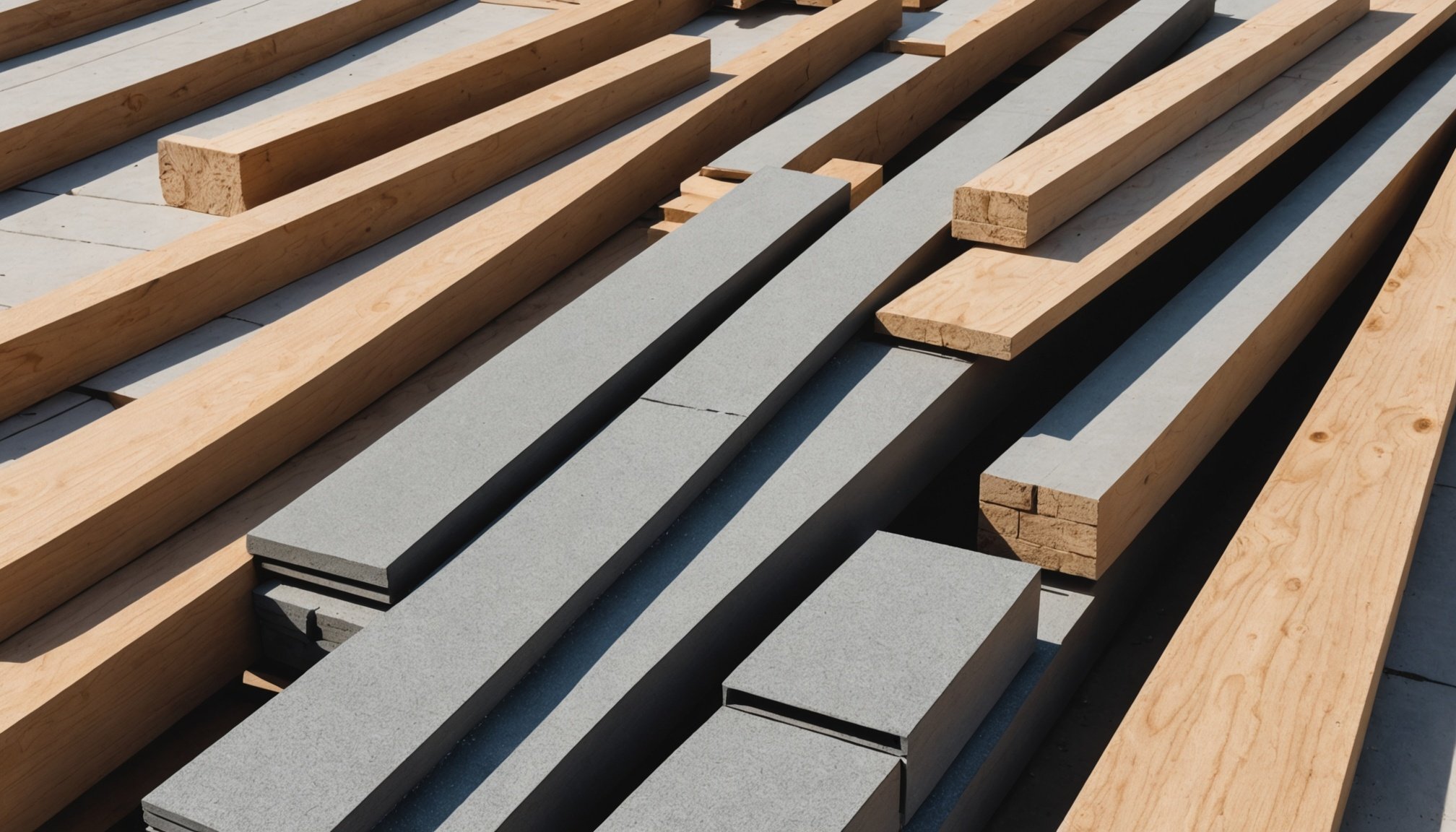Benefits of High-Quality Building Materials
Choosing high-quality building materials can significantly enhance the durability and longevity of any construction project. These materials are engineered to withstand environmental stressors, reducing the likelihood of damage over time. This resilience means that structures require fewer repairs, translating to reduced maintenance costs in the long term. Maintaining a building can be financially draining; thus, investing in superior materials eases that financial burden, making it a smart economic decision.
Furthermore, high-quality materials inherently improve the safety and structural integrity of buildings. When engineering for safety, every material must meet precise standards to ensure that structures can endure both regular use and unexpected stress, such as extreme weather. These materials are subjected to rigorous testing to achieve industry certifications, offering peace of mind for both builders and occupants.
Topic to read : Unleashing innovative tactics to reduce water use in uk households
The ultimate benefit lies in the ability to build structures that not only meet but often exceed safety and reliability expectations. With robust materials, the overall lifespan of a structure is extended, enhancing its value and appeal. As such, selecting high-quality building materials is not simply a choice—it’s an investment in enduring quality and assurance.
Economic Advantages of Investing in Quality
Investing in cost-effective quality building materials yields long-term financial benefits, primarily through reduced costs related to repairs and replacements. Initial investments might appear steep, yet savings on future maintenance, alongside the increase in a property’s lifespan, highlight substantial economic advantages. High-quality materials are less prone to wear and environmental damage, thus requiring fewer fixes, ultimately lowering upkeep expenses over time.
Have you seen this : Key elements to keep in mind for developing cost-effective housing in dense urban areas
Another major advantage of using these materials is their positive impact on property value and resale potential. Homes and buildings composed of superior materials tend to attract discerning buyers, willing to pay a premium for structures that promise durability and reliability. These attributes enhance marketability, making such properties more attractive investments when listing them for sale.
When comparing initial costs to long-term benefits, the value of choosing high-quality materials becomes more apparent. While the upfront expenditure may seem daunting, the trajectory of savings, growth in property worth, and peace of mind regarding structural dependability justifies the initial outlay. Evaluating long-term gains alongside initial outlays can shift perspectives, encouraging investment in the safest, most sustainable, and economically sound options.
Aesthetic Improvements and Design Flexibility
Utilising high-quality building materials can profoundly influence a project’s aesthetic appeal and design flexibility. These materials offer a diverse array of design options that cater to various architectural styles and preferences, allowing builders and designers to create visually striking structures. With the introduction of modern technologies and innovative production techniques, high-quality materials now provide enhanced versatility in design, accommodating unique and complex structures without compromising on the quality or sustainability of the project.
Case studies have illustrated the impact these materials have on aesthetics, showcasing projects where the aesthetic appeal was significantly heightened. These examples underscore the importance of selecting materials that not only meet functional requirements but also enhance the visual quality of a building. In many cases, opting for superior materials has transformed ordinary projects into iconic landmarks through their distinctive aesthetics.
Furthermore, the aesthetic appeal generated by high-quality materials enhances the overall project appeal, making it more attractive to clients and stakeholders. The choice of materials can act as a unique selling point, often defining the identity of a building. This consideration is crucial for projects aimed at creating a lasting impression, as aesthetically pleasing buildings tend to attract more attention and acclaim, ultimately adding to their value and desirability.
Expert Insights on Selecting High-Quality Materials
Selecting high-quality building materials involves more than just choosing what’s aesthetically pleasing. Industry experts emphasise the importance of considering material certifications and standards to ensure safety and performance. These certifications validate that the materials meet stringent quality criteria, offering much-needed reassurance about their long-term viability.
Expert advice frequently highlights common mistakes that should be avoided when selecting materials. One such error is neglecting the environmental conditions in which these materials will operate. Knowledgeable professionals recommend evaluating the climate and environmental stressors that might affect the durability of the materials.
To make informed decisions, industry professionals suggest engaging with trusted suppliers who can provide insights and detailed information. This relationship can lead to better choices and improved project outcomes, as you have access to up-to-date innovations and technologies.
Additionally, the value of weighing both initial costs and long-term benefits can’t be overstated. Thought leaders often stress how an upfront higher expenditure can result in lowered repair and replacement costs over time, proving to be more cost-effective. Familiarising yourself with market trends and materials’ proven track records through expert insights can steer projects towards success, ensuring both economic and structural integrity are upheld.
Case Studies Illustrating Success with Quality Materials
Exploring case studies of quality building materials highlights their transformative impact on diverse construction projects.
Residential Projects
In the realm of residential architecture, high-quality materials have redefined luxury and sustainability. Projects like eco-friendly housing developments demonstrate how optimal material choices offer not only durability but also reduced environmental impacts. These homes, built to withstand harsh climates, showcase impressive longevity and minimal maintenance needs, proving that an initial investment in quality materials pays dividends over time.
Commercial Buildings
For commercial structures, high-quality materials equate to enhanced safety and long-term savings. Case studies often reveal how choosing superior materials lowers operational costs. In one notable office complex, robust construction materials led to significantly fewer repairs, boosting investor confidence and tenant satisfaction.
Sustainable Developments
Pioneering sustainable developments exemplify the intersection of high-quality materials and eco-conscious design. These case studies illustrate how precise material selection supports both environmental goals and structural integrity. A striking example is a green skyscraper utilizing recycled elements, which not only met stringent building codes but set new standards in environmental design.
Through these projects, it’s clear that the best practices involve thorough evaluation, commitment to sustainability, and keen attention to quality—guiding principles for future initiatives striving for excellence in the building industry.
Tips for Choosing the Right Quality Materials
When selecting building materials, it’s crucial to consider certain key factors to ensure the best results. Begin by evaluating the climatic conditions where the materials will be used, as this can significantly affect durability. Materials should be suited to withstand specific environmental stressors, ensuring longevity and reduced maintenance needs.
Another essential aspect is to assess the compatibility of the materials with the proposed design. High-quality options offer flexibility that enables complex and innovative architectural practices, enhancing both functionality and aesthetic appeal.
Resources play a critical role in this process. Engage with a variety of industry publications and databases that offer comprehensive information about the latest material innovations and their performance records. These resources provide insights that can guide effective decision-making.
Working with reliable suppliers is vital for accessing top-tier materials. Trusted suppliers not only offer quality assurances but also provide necessary certifications that confirm materials meet industry standards for safety and environmental considerations.
Collaboration with experienced suppliers can yield beneficial information and support, streamlining the selection process. These steps ensure that the materials chosen contribute positively to the project’s overall success, offering durability, safety, and aesthetic advantages along the way.











